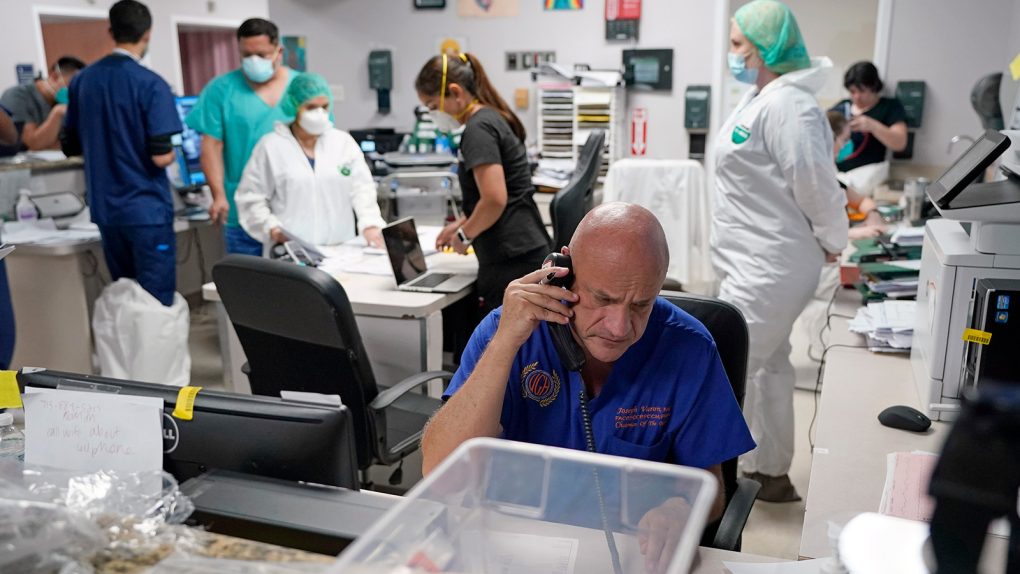- A new federal report has designated 21 states as “red zones” where the coronavirus is spreading at an alarming rate.
- The report includes a number of suggestions to help keep the coronavirus from spreading further.
- The number of coronavirus cases in the United States recently surpassed 4 million.
Back in March, when many states implemented widespread lockdown measures, it was widely assumed that life would go back to normal in just a few months. Summer 2020, it was assumed, would be just like any other — crowded beaches, busy barbecues, and packed baseball stadiums.
In reality, the coronavirus pandemic in the United States is just as grave today as it was a few months ago, if not more so. As a direct result of states not taking the virus seriously, along with many folks choosing to ignore basic safety guidelines like wearing a mask in public, the number of coronavirus cases in dozens of states has skyrocketed in recent weeks.
Recently, Dr. Anthony Fauci said that life in the United States many not revert back to normal until 2021. And that optimistic timeline assumes that we can come up with an effective coronavirus vaccine sooner rather than later. Though early clinical trials on various coronavirus vaccine candidates have been promising, more expansive trials are needed before we can assume that a COVID-19 vaccine is an inevitability in the short-term.
Meanwhile, with the coronavirus still spreading rapidly across a number of states, a new federal report relays that 21 states recently experienced a sufficient number of coronavirus outbreaks as to place them in the “red zone” and, in turn, subject to greater restrictions.
Still, the New York Times notes that not all state officials are inclined to implement such restrictions.
But some governors continue to be resistant. When Dr. Deborah L. Birx, the Trump administration’s coronavirus response coordinator, visited Tennessee on Monday, she spoke with Gov. Bill Lee, a Republican, about mask mandates, but he was loath to issue a statewide order. “We talked about statewide mandates; we also talked about alternative approaches,” he said afterward.
The 21 states currently in the “red zone” include Alabama, Alabama, Arizona, Arkansas, California, Florida, Georgia, Idaho, Iowa, Kansas, Louisiana, Mississippi, Missouri, Nevada, North Carolina, North Dakota, Oklahoma, South Carolina, Tennessee, Texas, Utah and Wisconsin.
The report, which can be read in its entirety over here, includes COVID-19 summaries for each state along with specific recommendations to help keep the virus at bay. The report also highlights specific counties in each state that have seen the largest spike in new coronavirus cases.
For areas found to be in the “red zone,” the report offers the following recommendations:
Public Messaging
- Wear a mask at all times outside the home and maintain physical distance
- Limit social gatherings to 10 people or fewer
- Do not go to bars, nightclubs, or gyms
- Use take out or eat outdoors socially distanced
- Protect anyone with serious medical conditions at home by social distancing at home and using high levels of personal hygiene, including hand washing and cleaning surfaces
- Reduce your public interactions and activities to 25% of your normal activity.
Public Officials
- Close bars and gyms, and create outdoor dining opportunities with pedestrian areas
- Limit social gatherings to 10 people or fewer
- Institute routine weekly testing of all workers in assisted living and long-term care facilities. Require masks for all staff and prohibit visitors
- Ensure that all business retailers and personal services require masks and can safely social distance
- Increase messaging on the risk of serious disease for individuals in all age groups with preexisting obesity, hypertension, and diabetes mellitus, and recommend to shelter in place
- Work with local community groups to provide targeted, tailored messaging to communities with high case rates, and increase community level testing
- Recruit more contact tracers as community outreach workers to ensure all cases are contracted and all positive households are individually tested within 24 hours
- Provide isolation facilities outside of households if COVID-positive individuals can’t quarantine successfully
Testing
- Move to community-led neighborhood testing and work with local community groups to increase access to testing
- Surge testing and contact tracing resources to neighborhoods and zip codes with highest case rates
- Diagnostic pooling: Laboratories should use pooling of samples to increase testing access and reduce turnaround times to under 12 hours. Consider pools of 2-3 individuals in high incidence settings and 5:1 pools in setting where test positivity is under 10%
- Surveillance pooling: For family and co-habitating households, screen entire households in a single test by pooling specimens of all members into single collection device.








